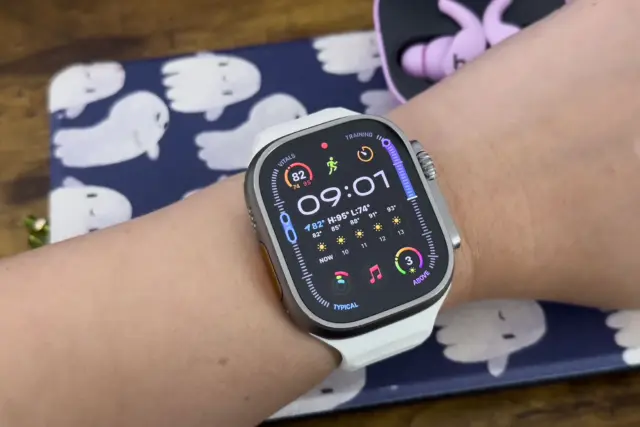
Just when you thought your Apple Watch was running smoothly on the latest watchOS 11.4, Apple pulled a fast one. In a move that has both surprised and relieved users worldwide, the tech giant has rereleased watchOS 11.4 to the public. But why the sudden do-over? And more importantly, what does this mean for your beloved wearable?
The initial release of watchOS 11.4, which rolled out just a few weeks ago, brought with it a set of anticipated improvements and features. Users were excited about the promised enhancements in battery life, the refined workout tracking, and the smoother overall performance. Many eagerly updated their devices, anticipating a better Apple Watch experience.
However, as is often the case with software updates, some users began reporting unexpected issues. While the problems weren’t widespread enough to warrant an immediate recall, a noticeable number of Apple Watch owners experienced frustrating bugs. These ranged from minor annoyances like occasional app crashes and notification glitches to more significant problems such as unexpected battery drain and connectivity hiccups.
Apple, known for its meticulous attention to detail and commitment to user satisfaction, seemingly took these reports to heart. Instead of simply issuing a minor patch, the company made the somewhat unusual decision to pull the original watchOS 11.4 and work on a revised version. This move, while perhaps inconvenient for some, signals Apple’s dedication to delivering a polished and reliable software experience.
So, what exactly went wrong with the first iteration of watchOS 11.4? While Apple hasn’t released a detailed breakdown of the specific issues, industry experts speculate that a combination of factors might have been at play. It’s possible that certain software interactions triggered unforeseen conflicts on specific Apple Watch models or under particular usage scenarios. Identifying and resolving these intricate bugs requires thorough investigation and rigorous testing.
The rereleased watchOS 11.4, which started appearing on users’ devices late yesterday, promises to address these initial shortcomings. While the core features and improvements from the original release remain intact, this new version likely includes crucial bug fixes and under-the-hood tweaks aimed at enhancing stability and performance.
Early reports from users who have already installed the rereleased update seem promising. Many are noting improvements in areas where they previously experienced issues. For instance, some users who reported rapid battery drain after the initial update are now seeing a return to more normal battery life. Similarly, complaints about intermittent Bluetooth connectivity appear to have subsided for some.
“I was so frustrated after the first update,” shared Sarah Miller, an Apple Watch Series 7 user from California. “My battery was draining so fast, I could barely make it through the day. I was constantly worried about it dying. But after installing this new version, it’s like my watch is back to normal. The battery life is great again, and I haven’t had any of those weird notification delays.”
This sentiment is echoed by many others across various online forums and social media platforms. The general consensus appears to be one of relief and appreciation for Apple’s swift response to the reported issues.
It’s important to remember that software development is a complex process, and even the most rigorous testing can sometimes miss subtle bugs that only surface in real-world usage. Apple’s decision to rerelease watchOS 11.4 demonstrates a commitment to its users and a willingness to take corrective action when necessary.
What should you do now?
If you previously updated to the initial version of watchOS 11.4 and experienced any problems, it’s highly recommended that you install this rereleased version. The update should be available automatically for most users. However, you can manually check for updates by following these simple steps:
- Make sure your iPhone is connected to Wi-Fi and Bluetooth.
- Open the Watch app on your iPhone.
- Tap on “General.”
- Tap on “Software Update.”
Your iPhone will then check for available updates. If the rereleased watchOS 11.4 is available, follow the on-screen instructions to download and install it. Ensure your Apple Watch is on the charger and within range of your iPhone during the update process.
What if you didn’t experience any issues with the first release?
Even if you didn’t encounter any problems with the initial watchOS 11.4, it’s still advisable to install this rereleased version. It likely contains subtle improvements and optimizations that can contribute to a smoother and more stable overall experience. Think of it as a refined version of an already good update.
Apple’s proactive approach to addressing user feedback and rereleasing watchOS 11.4 serves as a reminder of the company’s dedication to quality. While the initial hiccups might have caused some frustration, the swift response and the apparent improvements in this new version should reassure Apple Watch users.
This episode also highlights the importance of user feedback in the software development cycle. By reporting issues and sharing their experiences, Apple Watch owners played a crucial role in prompting the company to take action and deliver a better product.
The rereleased watchOS 11.4 is more than just a bug fix; it’s a testament to Apple’s ongoing commitment to refining and enhancing the Apple Watch experience. So, go ahead and update your device. You might just find that the biggest headache you were experiencing with your Apple Watch has finally been resolved. This surprise rerelease could be the key to unlocking the full potential of your wearable once again. Don’t miss out on the improved stability and performance – update your Apple Watch today!










